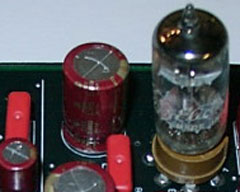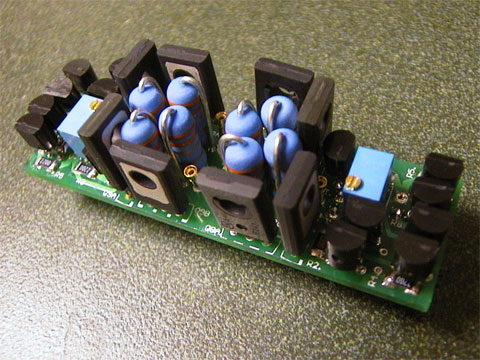Buy Boards & Parts:
www.beezar.com
www.beezar.com

The Millett Hybrid MAXed
Millett Hybrid History
Pete Millett -
On November 11, 2001, a singular event occurred for the community of DIY (Do-It-Yourself) headphone audio - perhaps DIY audio, too. Pete Millett published
an article entitled "Build A Low-Voltage Tube Hybrid Headphone/Line Amp" that was published in Audio
Xpress magazine. Pete was/is the owner/developer/designer of Wheatfield Audio, a famous audio component manufacturer
specializing in tube audio. Historically, audio tubes have always required hundreds of volts, and represented
a lethal obstacle to the burgeoning DIY headphone amplifier community. However, Pete's article and |
 |
|
design detailed a hybrid combination of a conveniently monolithic, solid-state output stage with a low voltage vacuum tube gain stage - using
old automobile radio tubes designed to operate with 12VDC. |
|
|
As Pete himself states, "This is a great project for the newcomer to tubes, since it's easy to build, and safe - it runs on 24V DC power!"
The original Audio Xpress article is here: "Build A Low-Voltage Tube Hybrid Headphone/Line Amp" (612 kb PDF file) Every Millett Hybrid builder should read this article! The result of Pete's article was this: 
The schematic is also worth studying and can be found here: Hybrid Head Amp Schematic (176 kb PDF file) Other information is available on Pete Millett's own web site, where he has a section on the Millett Hybrid. His site has provided much of the information above. Again, any Millett builder is encouraged to read and refer to Pete's site for this information and more. Without Pete Millett's generosity in freely sharing his design with the DIY community, there would be no Millett MAX. Thank you, Pete Millett! |
|
revMH Millett Hybrid -
Around 2005, Nate Maher (forum user "n_maher") teamed up with Drew Dunn (user "drewd") of Shellbrook Labs to make the first major modification
to Pete's design. As the story goes in Redhat magazine -
Nate started asking questions on the Internet forums about whether something could be done to update the Millett Hybrid design.
Drew Dunn had been making solid state headphone amplifiers and offered to team up with Nate to update the Millett design.
The "revMH" Millett was born:

Numerous details are available about the revMH Millett on this site - both the forums and the web pages documenting this version of the amp. Needless to say, the numbers of revMH Millett Hybrid amps are tremendous. Versions in almost every shape and case style imaginable have been built: 
|
|
Diamond Buffer Boards -
Apparently, Drew and Nate had anticipated an improved output stage because the "rectangle" space was allocated on the board. Diamond buffers, such as those on the Phil Larocco-inspired
PPA headphone amplifier were in enormous demand. Never satisfied ;-), Nate kept asking questions about a discrete output stage
for the Millett. In stepped forum user "Steinchen" who teamed with Nate to offer the revMH Diamond Buffer Boards. Steinchen
designed a board based on the PPA diamond buffer, but used paralleled output transistors to increase the current bias without
using heat sinks. Much of the board used SMD parts/technology in order to keep the board design within the small limits of the
available space on the revMH board. For much of the DIY headphone community, this was the first foray into SMD techniques. The boards
were a great success, and brought the quality of sound for the Millett to new heights. The Steinchen DB boards were soon in great
demand for the Millett, and are still sold and traded as an individual item:

(user Reynol's DB photo posted on the forums)
Steinchen's site is an invaluable reference tool and forms the basis of the output transistor recommendations for the Millett MAX:
discrete Diamond Buffer for revised Millett Hybrid Below is a typical revMH Millett Hybrid with Diamond Buffer Boards. Power was not included, but typically, anything from a linear-regulated Edpac to Tangent's TREAD or STEPS were used. 

|
|
